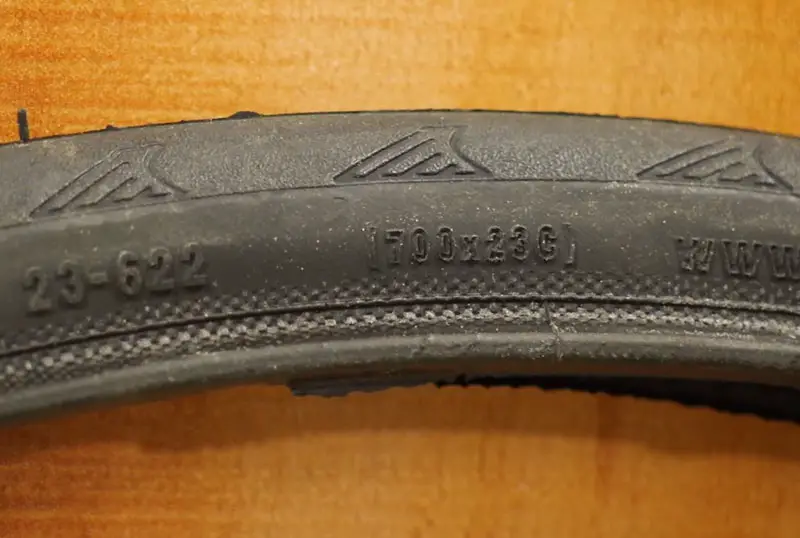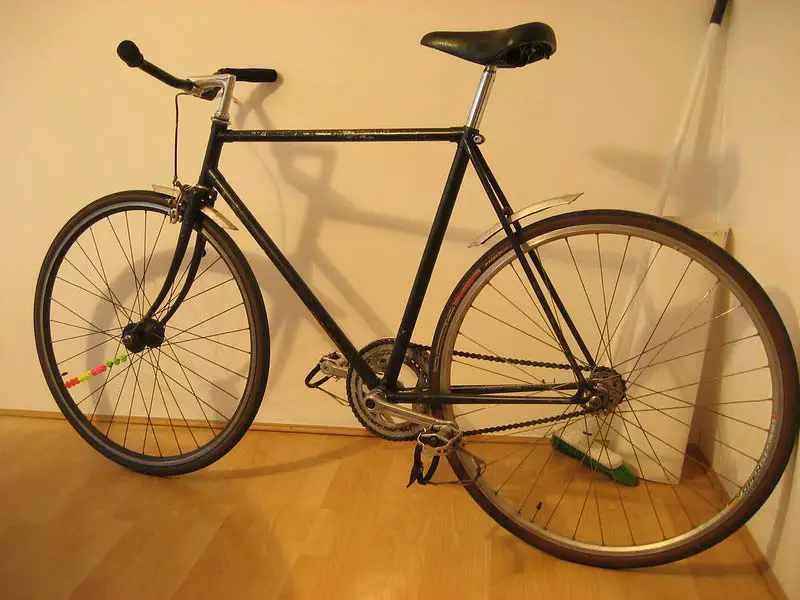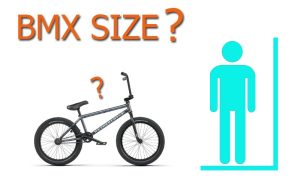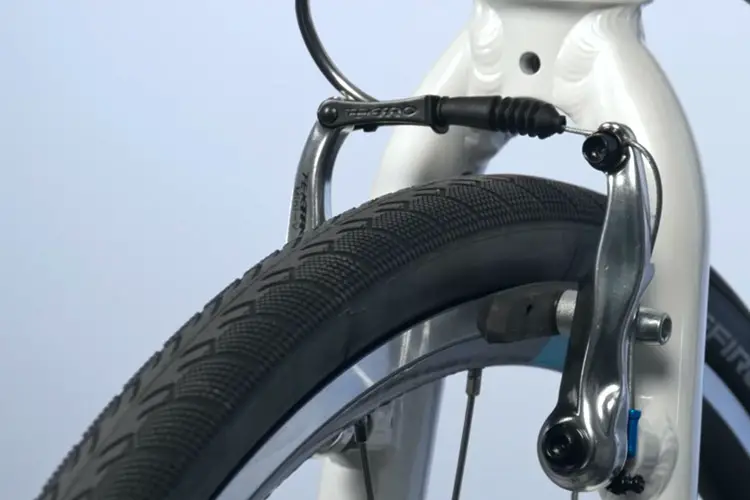
Over time, any bike brake will need to be an adjustment to ensure brake efficiency, power, and the safety of the rider. The linear-pull, also known as the v-brake type, is no exception to that. There are various reasons as to why your brakes need to be an adjustment, such as the following:
- The brakes can be rubbing on the rim
- They might not be tight enough
So with that said, how do you adjust your linear-pull or v-brake? In this tutorial, we cover some easy steps on how to make adjustments on your own.
See also:
Contents
What you’ll need
- Phillips head screwdriver
- 5 mm Allen wrench
- zip-tie (optional)
Steps on how to adjust the linear-pull or v-brake
1. Check the alignment
Before you start, make sure that your wheels are true to alignment. Keep in mind that a properly aligned set of wheels will increase your braking performance. Before adjusting any type of brake, whether it’s a rim brake or a disc brake, make sure that the wheels are completely in the dropouts.
Then, put your bike on the ground and release the front-quick release. Make sure that the wheel is in the dropouts, and then lock the quick-release once more. Do this procedure for both the front and the back wheel of your bicycle.
Next, put your bike up into a bike stand for better maintenance visibility so that you can adjust your brake pads with great ease. You should also check the brake levers: you’ll want two finger lengths between the handlebar and the brake when you squeeze. If it goes into the handlebar, the brake there is not tight enough.
2. Release the brake
Next, take your optional zip-tie and then wrap it around the very back end section of the brake pad. This step will create a tow-in on the brake pad. You might be wondering what this procedure is for – such tow-in will keep the brake pads from squealing as you ride.
Always remember that a silent bike while riding is always important (which also saves your parts from easily wearing out).
3. Adjust your barrels
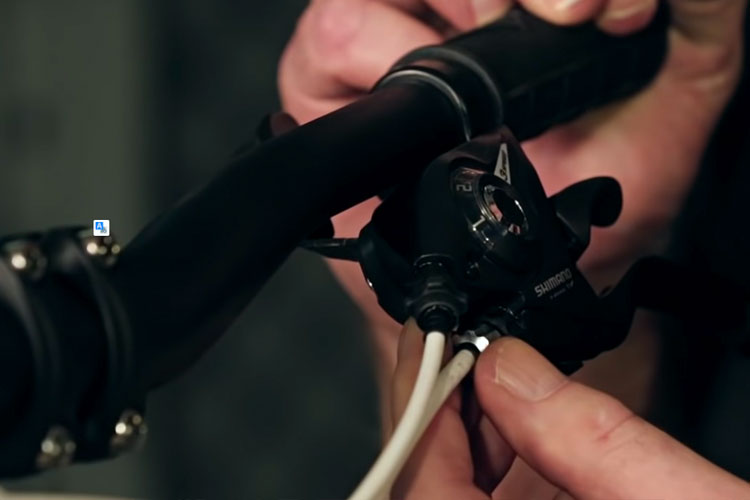
After you’ve released the brake, attach the cable back into the little cage and then go to the barrel adjuster. Next, adjust your barrel out about 6 turns.
Inspect your brake barrel on the lever and look for the little slot on the barrel adjuster for the cable to slide in when you are replacing the cable. Use that as a reference point.
After you turn the barrel 6 turns, you should see a bit of thread showing from there. What loosening the barrel does is that it gives you a tighter brake. Usually, if your linear-pull brake only needs minor adjustments, a simple barrel adjustment will be sufficient.
4. Cable and pad adjustments
This is a step that you can go through if loosening the barrel didn’t work in tightening your brakes. To start, use your 5 mm Allen wrench to remove all of the slack out of the cable.
To do this, loosen the pinch bolt using the wrench and then pull the cable while holding the two brake arms together so the pads are up against the surface of the rim. Then, lock the cable back in. Remember that it doesn’t need to be too tight – just make sure that it is nice and snug.
Make sure that when you align it, the height should be as far as the braking surface on the rim as possible without hitting the tire.
- If you align it too low, as the pad wears, it will tend to migrate down the braking surface a little bit, and eventually, it will fall off the bottom of the rim.
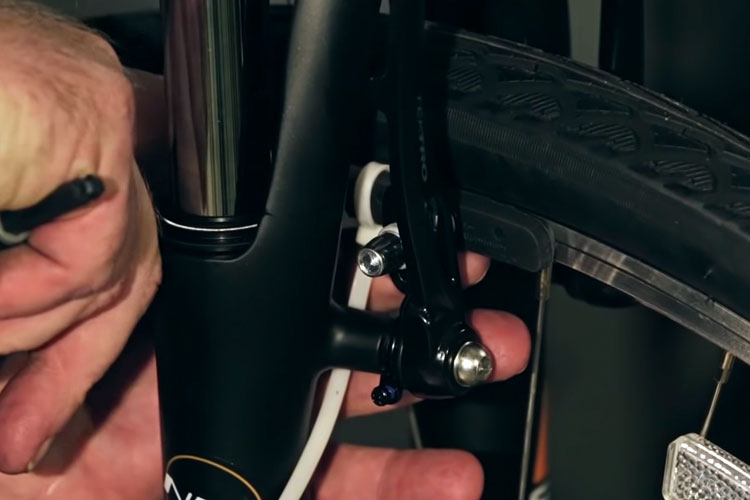
Take your 5 mm Allen wrench and loosen the bolt. Then, move your brake pad upwards as high as you can. It could be a little too tight but that’s because we took all the slack out of the cable earlier. Slide it up and make sure that the pad is as high as it will go. The front edge of the pad should be in the same location n the rim as the back section of the pad.
Check to see if the pad is completely flat up against the rim surface: leave the barrel adjuster open so that the rim is just barely rubbing along the brake pads.
- As you tighten the barrel adjuster, since the cable is already tight again, it should open up just perfectly so that your brakes are the exact tension that you want them without rubbing on the wheel.
Lock the pad into place, which aligns the entire brake pad system. Do the same step on the other side. Then, measure if your brake lever has a two-finger length to know if the tightness is just right.
5. Even out the brake arms
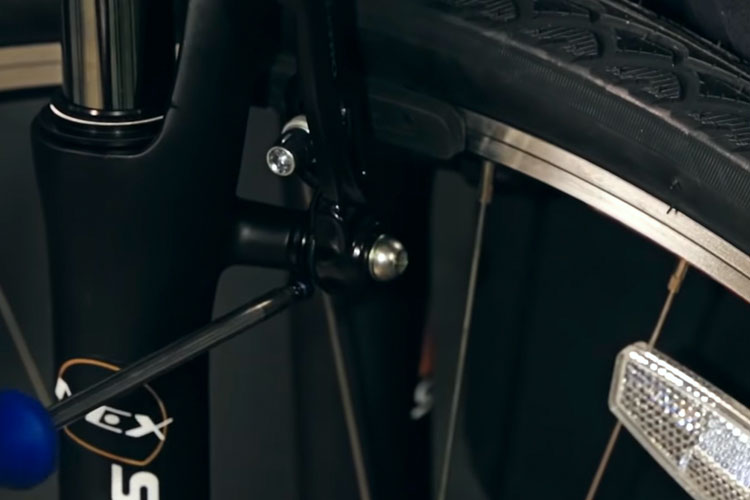
To balance out your brake arms, turn your barrel adjuster back in 6 turns. Remove the zip-tie from earlier and then pull on your brake lever several times. Check to find an even spacing of the brake pads coming off the rim on both sides.
Ideally, you’ll want your brake pad to come off the same amount as the opposing brake pad. To do this, use a Phillips head screwdriver and adjust the Phillips head screw at the bottom. This step will adjust the spring tension on this brake arm only.
Once you screw it in, it also increases the deflection of the brake arm off the pad. You will see that one brake arm is moving a lot while the other arm isn’t moving that much once you try to pull the brake. What this does is unbalance the system by putting more spring tension on one side than the other.
To fix this, you can either release the tension from this side or increase the tension on this side. This is how you balance out the rim pads. In the end, be sure that the pads do not touch the tire to avoid getting squealing sounds.


